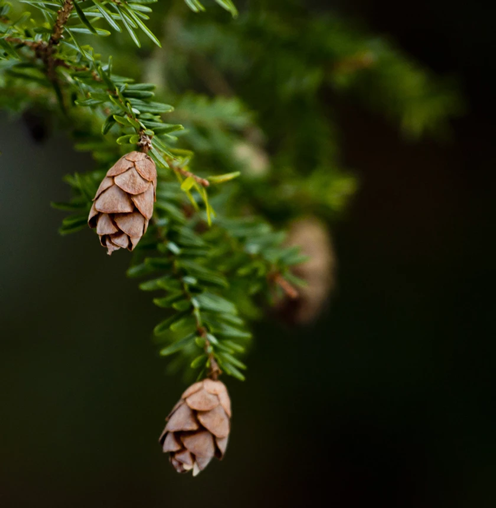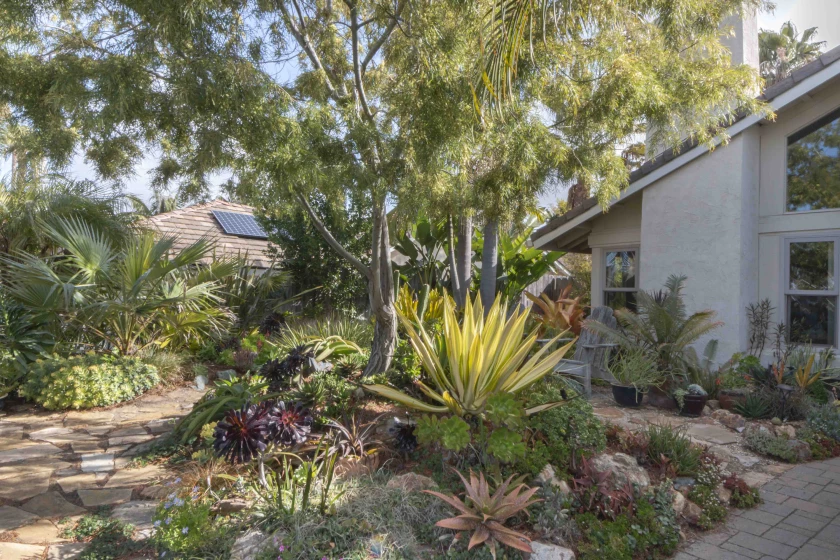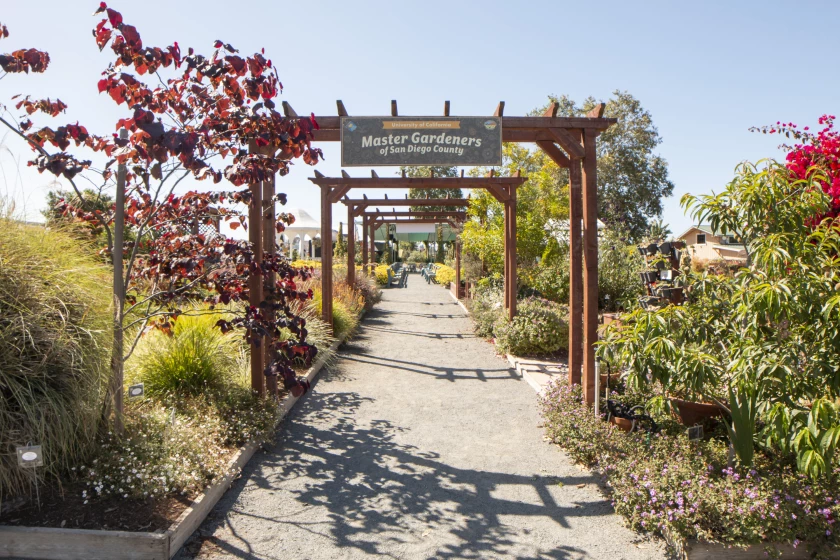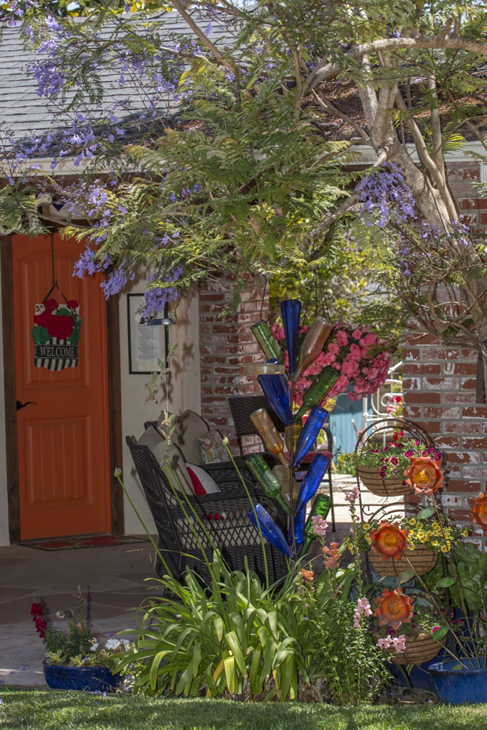November’s diffuse light adds dimension to garden photos

Close-up images capture otherwise unseen details and depth of field.(Deanna Chandra)
By Deanna Chandra
(This article first appeared in the San Diego Union-Tribune on Nov 13, 2021)
Savvy gardeners design their landscape to offer seasonal points of interest during the subtly changing conditions of our San Diego climate; as one section of flowers fades, another area comes alive with blooms.
To document the rewards of meticulous planning, it is a good idea to regularly photograph your garden landscape. You can follow the lead of professional garden photographers who take numerous photographs while experimenting with light, color and detail.
Just as gardens need light to come alive, so does every photograph. The intense sunlight of the spring and summer sun cultivates vibrantly colored blooms and luscious landscapes. However, these conditions are challenging to photograph, as harsh shadows are cast and highlights are irrevocably blown out. As summer turns into fall, November’s diffuse light through often-overcast sky provides envious, yet fleeting conditions for capturing dramatic, multidimensional images.
As the sun’s rays bend through the coastal marine layer, fog illuminates the delicate petals of plant material and sculptural elements appear to glow against seemingly monochromatic landscapes. Using the sun as background light gives drama to your image and creates depth in the space behind the subject.

Backlighting permeates an agave’s leaves and creates an glowing illusion.(Deanna Chandra)
To take advantage of the autumnal sun as a backlight, place the subject of the photograph between the camera and the sun’s rays. A simple way to achieve a backlight effect is to stand with the camera at an angle toward the sun. Never point the camera directly at the sun; lens flare may occur when the camera is pointed directly at a light source. Lens flare causes an undesirable line or dots appearing throughout the image. Using a lens hood, or simply taking the photograph from a shady spot, reduces the chance of lens flare.
The cool weather months also provide an opportunity to focus on the details of the garden. Soft diffuse light creates an optimal condition to capture details that are otherwise lost in harsher light conditions. One way to capture up-close, crisp images of very small objects is macro photography. Macro images are taken with specialized macro lenses or by utilizing the macro mode on some cameras. Fine details may also be captured by using a zoom lens at a medium focal length.
Architectural elements of the garden stand out when summer fades into fall. Fences provide a line to draw the eye into an image. A curvy walkway lined with colorful annuals is a simple way to document the architectural details of the landscape. Trellises that are otherwise covered in blooms can be seen and appreciated during the cool weather.

Garden structures take center stage without the showy blooms of spring.(Deanna Chandra)
Gardeners who are hesitant to photograph their garden in the fall and winter months commonly say “nothing is blooming” or that they “don’t have anything” in their garden beds. However, this is the perfect time of the year for documenting the foundation of the garden. The geometric layout of vegetable garden beds, delicate rock pathways leading to shaded pergolas, and newly planted lines of bare root trees can make for interesting images. Consequently, these seasonal photos may be handy when planning spring and summer projects.
As the days get shorter, vibrant colors fade into warm hues of fall. Gardeners who have created their ornamental gardens with the changing seasons in mind are rejoicing with the emergence of their cool weather perennials and the opportunity to create colorful landscapes with abundant annuals. Many of these meticulously planned gardens were created utilizing the same color techniques photographers use to compose their images and convey emotions.
Using complementary colors in the seasonal garden is a common practice. Colors such as blue and orange combine to create dramatic effect in a landscape. Photographers seek out these combinations to convey drama and excitement in images. A pop of color can be lighthearted, exciting or mysterious. Imagine a single blooming bush in an otherwise green landscape or an orange door framed by a brick house and blue glass garden art. Conversely, a monochromatic color scheme on a gray overcast day conveys a mood of melancholy.

Orange and blue complement each other and express whimsical emotions.(Deanna Chandra)
With gentle sunshine, cooler temperatures and (optimistically) increased rainfall, November provides gardeners with the ideal conditions for cool weather crops. These same conditions also provide an ideal opportunity to capture warm, dramatic and multidimensional photographs. Without the harsh rays of the summer sun, details emerge that are often lost and overlooked. The garden landscape takes center stage and the foundation of the garden can be appreciated. Complementary and contrasting color combinations convey emotions and create interest. Photographing your garden seasonally helps document your garden for reference, and maybe you’ll see one perspective you want to frame.
Deanna Chandra is a San Diego Master Gardener, class of 2018, and an award-winning garden photographer.

